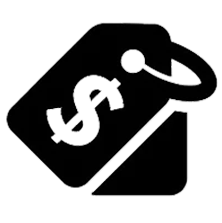Bauer Nexus Geo Senior Hockey Stick
- 0 left in stock
Free Shipping $100+

Fast Easy Returns

Best Price Promise

Ships Canada Only
Intro & New Features
The Bauer Nexus Geo SR Hockey Stick is designed to give you ultimate versatility and ability to perform on all aspects of your game. The Nexus Geo Stick features new Bauer technologies in the ER Spine 5-Side Shaft Design, and OmniCore Blade. Bauer has continued using their ACL Technology and Asymmetrical TexTreme construction as it has performed well for them in previous years. With the Bauer Geo Hockey Stick weighing in at 390 grams, matching the weight of the Vapor FlyLite, the Nexus Geo truly is an elite stick offering from Bauer.
Shaft Construction
The Nexus Geo Stick features Bauer’s new ER Spine Technology, which is a 5-sided shaft geometry that removes excess carbon fiber layers from the loading zone of the stick. The 5-sided shaft shape gives you a unique feel which contours to the player’s hands for enhanced stick control and feel.
The shaft also features ACL (Advanced Carbon Layering) which is a Bauer specific construction to help eliminate weight in the stick. Asymmetrical TeXtreme maximizes the energy flow from the shaft into the blade, and the DuraFlex Resin System adds durability to the entire stick.
Blade Construction
OmniCore Technology is also another new feature Bauer has incorporated in the Bauer Geo Hockey Stick. The OmniCore technology adds stability to the blade which creates a faster release, and reduces blade fatigue. The Nexus Geo also features Monocomp Technology which is a true one-piece blade and shaft design which improves stick balance and puck control.
Stick Flex Profile
The Nexus Hockey Sticks are constructed with a mid-to-low kick point which is optimized for versatility. This flex profile allows you to lean into your shots easily and helps create faster energy transfer into the blade.
Graphics
The Bauer Nexus Geo Hockey Stick features the traditional Black and Blue colorway that you have grown to know. This year they have added an eye catching green streak highlight on the bottom of the shaft, and back shaft side.
Blade Patterns/Flex/Lengths
87 Flex (P28, P88, P92, P92M) L/R - 60”
77 Flex (P28, P88, P92, P92M) L/R - 60”
70 Flex (P28, P88, P92, P92M) L/R - 60”
Intro & New Features
The Bauer Nexus Geo SR Hockey Stick is designed to give you ultimate versatility and ability to perform on all aspects of your game. The Nexus Geo Stick features new Bauer technologies in the ER Spine 5-Side Shaft Design, and OmniCore Blade. Bauer has continued using their ACL Technology and Asymmetrical TexTreme construction as it has performed well for them in previous years. With the Bauer Geo Hockey Stick weighing in at 390 grams, matching the weight of the Vapor FlyLite, the Nexus Geo truly is an elite stick offering from Bauer.
Shaft Construction
The Nexus Geo Stick features Bauer’s new ER Spine Technology, which is a 5-sided shaft geometry that removes excess carbon fiber layers from the loading zone of the stick. The 5-sided shaft shape gives you a unique feel which contours to the player’s hands for enhanced stick control and feel.
The shaft also features ACL (Advanced Carbon Layering) which is a Bauer specific construction to help eliminate weight in the stick. Asymmetrical TeXtreme maximizes the energy flow from the shaft into the blade, and the DuraFlex Resin System adds durability to the entire stick.
Blade Construction
OmniCore Technology is also another new feature Bauer has incorporated in the Bauer Geo Hockey Stick. The OmniCore technology adds stability to the blade which creates a faster release, and reduces blade fatigue. The Nexus Geo also features Monocomp Technology which is a true one-piece blade and shaft design which improves stick balance and puck control.
Stick Flex Profile
The Nexus Hockey Sticks are constructed with a mid-to-low kick point which is optimized for versatility. This flex profile allows you to lean into your shots easily and helps create faster energy transfer into the blade.
Graphics
The Bauer Nexus Geo Hockey Stick features the traditional Black and Blue colorway that you have grown to know. This year they have added an eye catching green streak highlight on the bottom of the shaft, and back shaft side.
Blade Patterns/Flex/Lengths
87 Flex (P28, P88, P92, P92M) L/R - 60”
77 Flex (P28, P88, P92, P92M) L/R - 60”
70 Flex (P28, P88, P92, P92M) L/R - 60”
Works
Best responsive mid kick Bauer stick ever made. Light enough but not too light
Nice balance and weoght
I got right handed stick it took longer than it said it would
| Feature | Description |
|---|---|
| Category | Elite |
| Weight | 390g |
| Flex Point | Mid-to-Low Kick-point |
| Shaft Construction | ER Spine 5-Sided Technology |
| Blade Construction | OmniCore Blade Technology, Monocomp Technology |
| Material | ACL Technology, DuraFlex Resin System, Lightweight Asymmetrical TeXteme |
| Length | 60” |
| Grip | Yes |
| Warranty | 30 Days |

Hockey Player Stick Sizing & Information Guide
Selecting the right stick for you.
When it comes to sizing a Hockey Stick, the length tends to be a preference. Sticks come in Senior, Intermediate, Junior and Youth lengths with corresponding flex options. You will need to consider your weight and height or the person you are buying for in order to choose the correct size. Intermediate, Junior, and Youth hockey sticks will have smaller shaft dimensions, making them easier for young players to hold and control.
A stick can always be cut down in length, and will usually be cut down for kids. However, selecting a hockey stock too long in length or the wrong flex can hinder performance. For kids, junior, intermediate and senior all come in roughly standards length. In some cases, each Junior flex will be a different length of stick. Look at each and compare the height of the player you are buying for.
Flex can be tricky to pick as every hockey player is different and has their own preference. You can think of flex numbers as pounds of force. Having too stiff or too whippy a stick can hinder performance in their own ways.
Personalizing your stick length.
As mentioned before, length is very much personal preference. To determine a benchmark height, stand with your shoes off and the stick against your body with the toe on the ground. As a general rule of thumb we recommend sticks to come up to between your mouth and nose. For kids, or players who are still growing, the maximum height we recommend is eye level.
Mark the shaft of the stick where the height is desired and cut it down to length. Make sure to re-insert the plug from the top to prevent an open composite end at the top of your stick.
When cutting a stick down, keep in mind that the shorter you cut a stick, the stiffer it becomes. As a general rule, a stick increases 3% in stiffness for every inch cut off. If you are unsure how much you want to cut off, take the least amount first so that you can always cut more if necessary. Cutting the stick multiple times will not affect the sticks construction.
Information to Consider
Flex Options
Players want to be able to fully flex the stick. If a stick is too soft, the resulting shot will be inaccurate and weak. If a stick is too stiff, there will be no power behind the shot. Think of the flex number as pounds of force. This is the number of pounds that need to be put into the stick to fully flex it.
Curve Options
In most cases, sticks are offered in multiple blade curve pattern options. Please refer to our blade pattern charts for more information regarding the patterns available.
Kick Point Options
A Mid-kick stick will have a stiffer taper so that it flexes more in the middle of the shaft. These sticks have a longer loading time but offer a more powerful shot, perfect for players taking a lot of slap shots.
A Low-kick stick will have a stiffer middle of the shaft and softer taper so that it flexes at the bottom of the shaft closer to the blade. These sticks will have a much quicker release perfect for quick snap shots and writs shots.





















